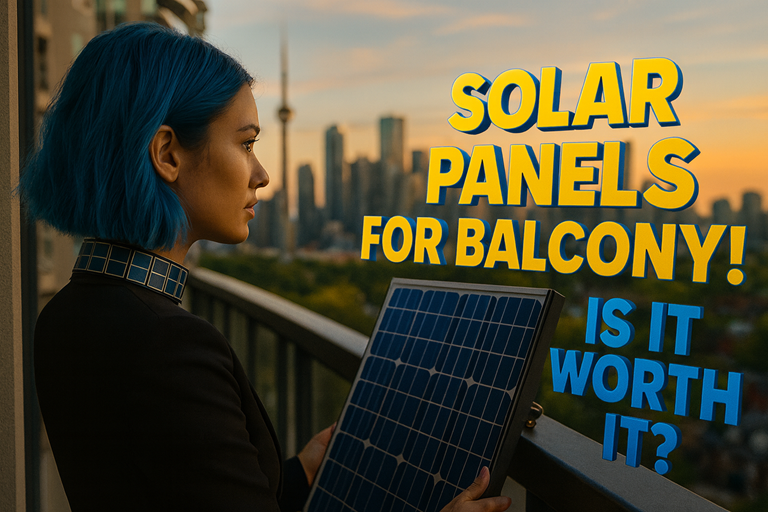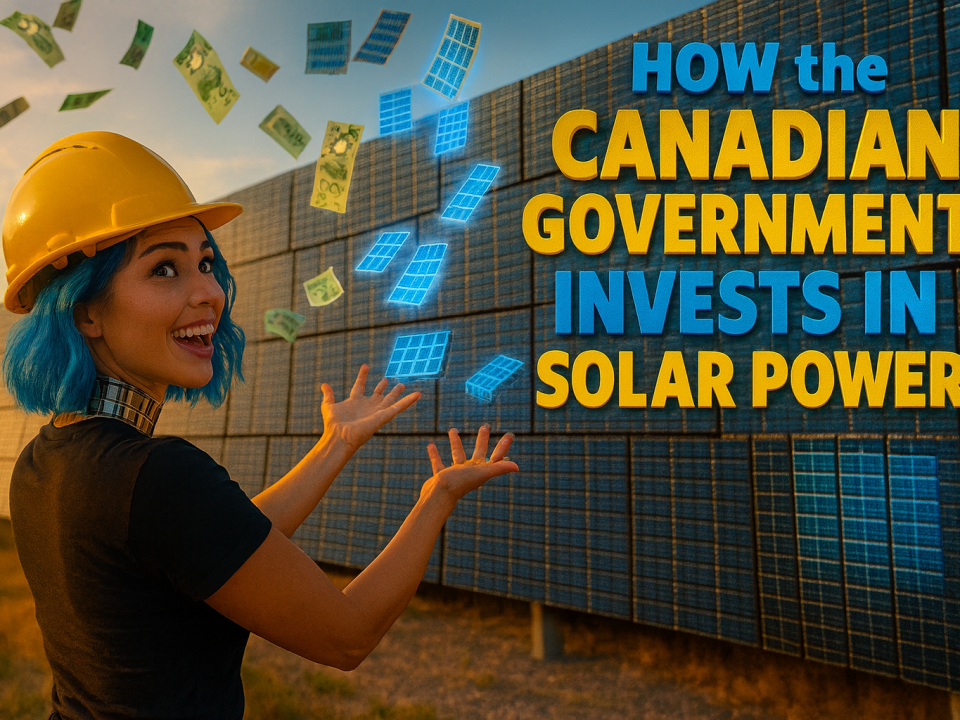
BC Hydro 2025 Plan Shows B.C. Off Track for CleanBC Electrification Goals
November 27, 2025You’ve probably seen the headlines. “Wind is taking over.” “Solar is lagging behind.” If you’re a homeowner looking to cut your energy bills, this kind of news can be incredibly confusing. Is solar still a smart buy, or are you betting on the wrong horse?
Here is the reality. Wind power is indeed growing fast and is expected to account for about 70% of new renewable energy projects in Canada by 2030. But that statistic tells a story about the national grid, not your rooftop.
In my 12 years as a Solar Energy Consultant, I have seen this confusion stop too many families from saving money. This post will clear up the difference between utility-scale trends and your personal energy independence. I will explain exactly how the 2030 forecast affects your wallet and why solar remains the best option for homeowners like you.
So, grab a coffee and let’s look at the numbers together. I’ll show you why the “wind vs. solar” debate isn’t what it seems.
Key Takeaways
- Wind power will dominate the national grid, making up roughly 70% of new renewable capacity by 2030, according to the Canada Energy Regulator.
- Rooftop solar is for individual savings. While it makes up a small fraction of total generation, it gives you direct control over your bills.
- Costs are clearer in 2025. The average residential solar system now costs between $2.50 and $3.50 per watt.
- Incentives have changed. The Canada Greener Homes Grant is closed to new applicants, along with Canada Greener Homes Loan and no longeroffer interest-free financing up to $40,000 but there is a way.
- New Tech is here. Advanced TOPCon panels are pushing efficiency over 24%, making modern systems more powerful than those from just a few years ago.
- Tools like those from SolarEnergies.ca help you calculate your specific payback period by using local sun data rather than national averages.
Why headlines about wind “beating” solar can confuse Canadian homeowners who are just trying to lower their bills and go greener.
Headlines that claim wind is “beating” solar often miss the point for the average family. These stories compare two different tools that solve different problems.
Wind power grows through massive, utility-managed projects. Think of the new Buffalo Plains Wind Farm in Alberta, which will add 495 megawatts to the grid. These projects are great for the province, but they don’t lower the delivery fees on your monthly bill.
Solar panels do something wind cannot do for you. They provide a direct way to reduce electricity bills right at the source—your home. When you read about wind’s growth, remember that it helps the utility company, while rooftop solar helps you.
Clean energy sources act as a team. Fossil fuels still supply a large chunk of Canada’s energy needs. Replacing that requires both wind farms in the fields and solar panels on our roofs. The “competition” is a myth; they are simply partners in a larger system.
Trends in Solar and Wind Energy in Canada
Wind energy is expanding rapidly with giant projects connected to the provincial grids. At the same time, rooftop solar is evolving into a personal financial tool for families. Understanding this split is key to making the right choice for your home.
How is wind energy expanding across Canada, mainly through large grid-scale projects?
Wind is doing the heavy lifting for the national grid. The Canada Energy Regulator predicts that wind will account for the majority of renewable capacity additions through 2030. This makes sense because wind turbines are incredibly efficient at a massive scale.
Provinces like Alberta and Quebec are leading this charge. For instance, the massive Des Neiges wind projects in Quebec are set to add significant power to the network. These developments connect directly to the high-voltage lines that power cities and factories.
This growth helps Canada meet its carbon emissions targets. But for you, the homeowner, this is background infrastructure. It keeps the lights on, but it doesn’t protect you from rising rate hikes in the same way generating your own power does.
You can track these large-scale changes through the CER’s updated reports, but remember that these numbers reflect industrial progress, not residential opportunity.
What challenges do homeowners face with solar energy adoption (upfront cost, incentives, net metering, uncertainty)?
Solar is a smart investment, but it comes with hurdles. The biggest one is the price tag. In 2025, a typical 5kW system costs between $12,500 and $17,500. That is a significant amount of money to put down upfront.
Government programs have shifted. The grant portion of the incentives and rebates program is closed to new applicants along with the Canada Greener Homes Loan. Not allowing you to borrow up to $40,000 interest-free over 10 years anymore is a demotivating factor. The good news we can provide an opportunity for 0% financing over 15 years with 0 down payment, and that removes the sting of the initial purchase.
Another challenge is the “rules of the road.” Net metering allows you to earn credits for extra power you send to the grid. But rules can change. We saw uncertainty in Alberta recently with renewable project pauses, which made some homeowners nervous.
Insider Tip: Don’t just look at the system price. Check your local utility’s net metering cap. Installing a system that produces more than your annual usage is often a waste of money because many utilities won’t pay you for the excess surplus.
Where does rooftop solar actually fit into this growth story for families, not just utilities?
Rooftop solar allows you to opt out of the rental model of buying power. While large wind projects fix the grid, residential photovoltaics fix your household budget.
Solar makes up a small percentage of total generation, but it punches above its weight for financial freedom. By generating your own power, you protect yourself from future rate increases. You effectively lock in your electricity price for the next 25 years.
It also adds security. When paired with a battery, a rooftop system keeps your fridge running during outages. This is a benefit that no amount of grid-scale wind power can offer your individual home directly.
Predictions for Renewable Energy in 2030
By 2030, the energy market will look very different. Technologies are getting better, and the grid is getting cleaner. Here is how these changes will impact your home energy choices.
Will wind energy dominate Canada’s renewable growth by 2030 on the grid side – and what does that mean for the price you pay for electricity?
Yes, wind will likely be the dominant source of new power. The Canada Energy Regulator forecasts wind capacity will rise sharply to meet net-zero goals. This is driven by economics; wind is currently one of the cheapest ways to generate electricity at a utility scale.
What does this mean for your bills? In theory, cheap wind power should stabilize rates. However, the cost of upgrading the electricity grid to handle all this variable power is high. Those infrastructure costs often trickle down to consumers as higher delivery fees.
This is where solar shines. Even if grid rates stabilize, delivery charges rarely go down. Generating your own power helps you offset those unavoidable fees, giving you a buffer that grid-scale wind cannot provide.
What advancements could improve solar energy for homeowners by 2030?
Solar technology is moving fast. We are seeing a major shift from older PERC panels to new TOPCon technology. These new panels are more efficient, often exceeding 24% efficiency compared to the 19-20% we saw just a few years ago.
Battery storage is the other big story. Prices for Lithium Iron Phosphate (LFP) batteries have dropped significantly in 2024. This makes it affordable to store your solar power for use at night, doubling the value of your system.
Financing is also getting smarter. Beyond the federal loan, some municipalities are offering Property Assessed Clean Energy (PACE) programs. These allow you to pay for solar through your property taxes, tying the cost to the home rather than you personally.
How could a wind-heavy grid plus more rooftop solar still support the idea of “Canada Goes Solar”?
We are moving toward a hybrid future. Imagine a grid where massive wind farms in rural areas provide the baseload power, while millions of rooftop setups handle local demand in the cities.
This combination makes the entire system stronger. Solar produces the most power on hot summer days when air conditioners are running—exactly when the grid is most stressed. Wind often picks up at night or in the winter.
Regions like Prince Edward Island already show how this works, with high wind integration. Homeowners there who add solar are complementing the grid, not fighting it. By reducing your carbon footprints at home, you are directly helping your province reach its 90 percent clean energy targets.
It is not about choosing one or the other. It is about using renewable resources where they fit best. For you, that fit is right on your shingles.
Decision Factors for Canadian Homeowners
Deciding to go solar is a big move. It is easier to install panels than a wind turbine, but you still need to run the numbers. Use simple tools to check your costs and savings before signing anything.
How should homeowners compare solar and wind energy options?
For a homeowner, this comparison is simple because you really only have one viable option for on-site generation. Small residential wind turbines are noisy, require high maintenance, and often struggle in residential zones. Solar is silent, static, and modular.

| Feature | Residential Solar | Residential Wind |
|---|---|---|
| Installation Cost | $2.50 – $3.50 per watt | $5.00 – $8.00+ per watt |
| Maintenance | Low (cleaning only) | High (moving parts) |
| Reliability | Predictable (sun paths) | Variable (gust dependent) |
| Zoning | Allowed in 99% of areas | Often restricted in cities |
Canada’s energy mix relies on large rooftop solar options to balance the grid. Experts like Darren Christie from the CER have noted that declining capital costs are keeping renewables competitive. If you want a trouble-free system that just works, solar is the clear winner for residential properties.
What are the financial and environmental benefits of choosing rooftop solar?
The financial argument for solar in 2025 is strong. With electricity rates climbing in many provinces, the “avoided cost” of buying power from the utility is higher than ever. A well-sized system can deliver an internal rate of return (IRR) of 5-8%, which beats many safe investment funds.
Environmentally, you are making a tangible difference. A standard residential system offsets tons of CO2 over its life. It is like taking a gas car off the road permanently.
Plus, you are supporting the local green economy. Your installation pays for local labor and expertise, keeping money in your community rather than sending it to a distant utility headquarters.
How can tools, guides, and calculators from SolarEnergies.ca help homeowners?
Moving from “curious” to “committed” requires hard data. That is why my team and I developed specific tools at SolarEnergies.ca. We don’t just give you a generic national average; we look at your specific situation.
Our calculators factor in local sunlight levels, which vary hugely between Calgary and Halifax. We also account for the current status of government programs so you know exactly what financial help is available right now.
You can quickly estimate your payback period by inputting your current hydro bill. These tools help you spot the “sweet spot”—the system size that maximizes your ROI without overspending. It turns a complex math problem into a simple decision.
Conclusion
Don’t let the headlines fool you. Wind is winning the race for the grid, but solar is the champion for the home. The two work together to build a cleaner future.
What the 2030 forecast really means for “Canada Goes Solar”
The forecast is clear: wind will provide the bulk of Canada’s new utility power. But rooftop photovoltaic systems remain the most powerful tool for families to take control of their own energy future.
By installing solar, you lower monthly bills and protect yourself from inflation. You become an active player in the energy market rather than just a passive consumer.
With Canada’s renewable energy sources expanding by 30% recently, the momentum is real. With our partner 0% financing over 15 years and 0 down, and new tech makes it more efficient than ever. If you are ready to see what solar can do for your specific home, check out the resources at SolarEnergies.ca to get started with confidence.
FAQs
1. Why is wind energy growing faster than solar in Canada by 2030?
Wind energy is expanding rapidly because it offers a higher capacity factor during our cold Canadian winters when solar production is naturally lower. Data from the Canada Energy Regulator shows that utility-scale wind is simply more cost-effective for stabilising the grid in provinces like Alberta and Saskatchewan.
2. Should homeowners still consider installing solar panels despite this trend?
Yes, because residential solar allows you to offset retail electricity rates—which include expensive transmission fees—rather than competing with wholesale power costs. I tell my clients that accessing the 0% financing can help you manage the upfront cost and secure a payback period of roughly 10 to 12 years.
3. What does the 2030 forecast mean for home energy choices?
The national forecast tracks utility-scale infrastructure trends, so it doesn’t change the fact that generating your own power is the best defence against rising delivery rates.
4. Are there practical tips for choosing between home solar and other renewable options?
I always recommend starting with an EnerGuide evaluation to identify where your home is losing the most heat before you spend a dime on generation. Once you are ready, use a free tool like PVWatts to confirm your roof has the right orientation to justify the investment.
References
- https://ourfiniteworld.com/2017/01/30/the-wind-and-solar-will-save-us-delusion/comment-page-1/ (2017-01-30)
- https://docs.nrel.gov/docs/fy08osti/41869.pdf
- https://www.naviusresearch.com/wp-content/uploads/2022/10/2021-03-Energy-storage-market-in-Canada.pdf
- https://digitalcommons.pace.edu/context/lawfaculty/article/2025/viewcontent/ottingerGUIDE___AS_PRINTED_rev_10_25.pdf
- https://interactive.carbonbrief.org/factcheck/solar/index.html (2025-08-27)
- https://www.ipcc.ch/report/ar6/wg3/downloads/report/IPCC_AR6_WGIII_FOD_Chapter06.pdf
- https://www.energy.gov/sites/default/files/2021-09/Solar%20Futures%20Study.pdf
- https://library.uniteddiversity.coop/Energy/Wind/Wind_and_Solar_Power_Systems.pdf
- https://www.cer-rec.gc.ca/en/about/news-room/news-releases/2025/wind-power-drive-canada-renewable-energy-growth-through-2030.html




